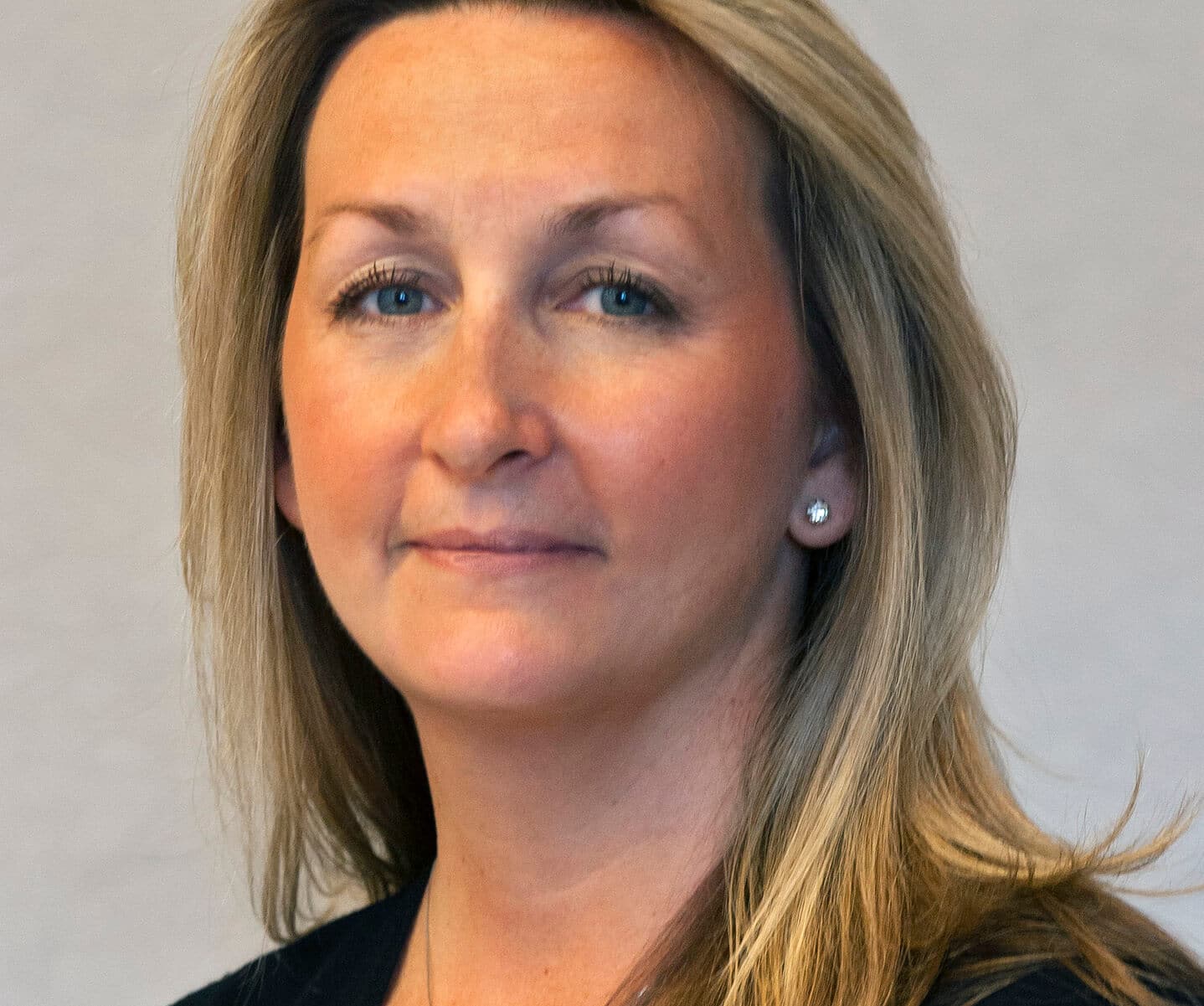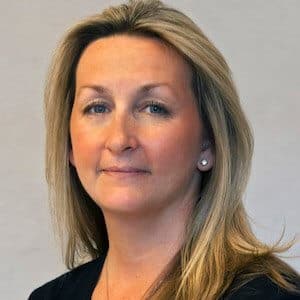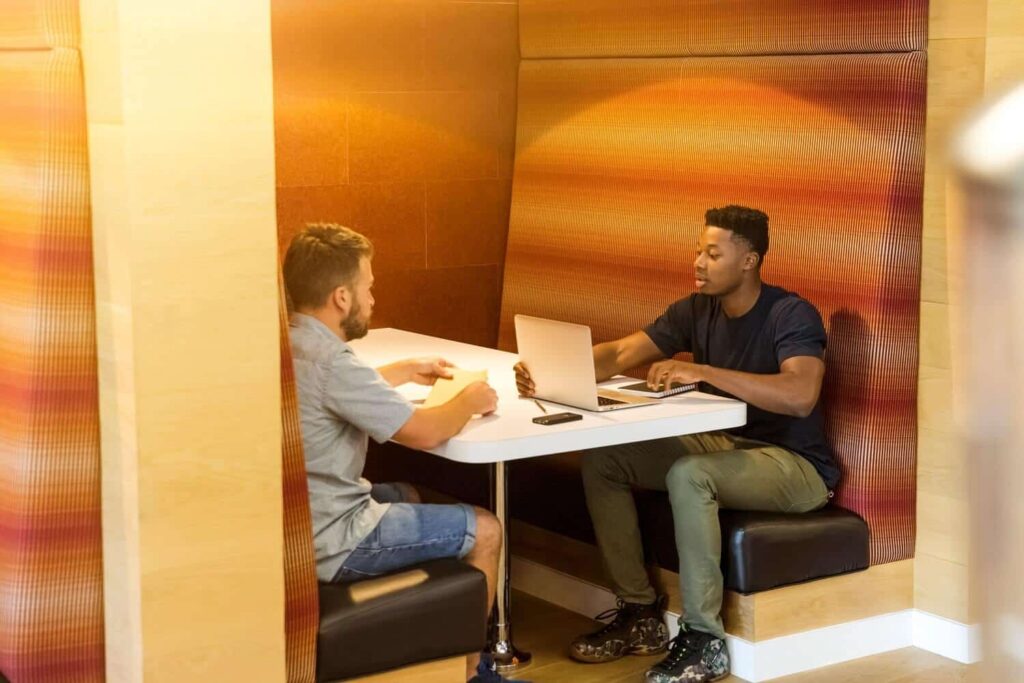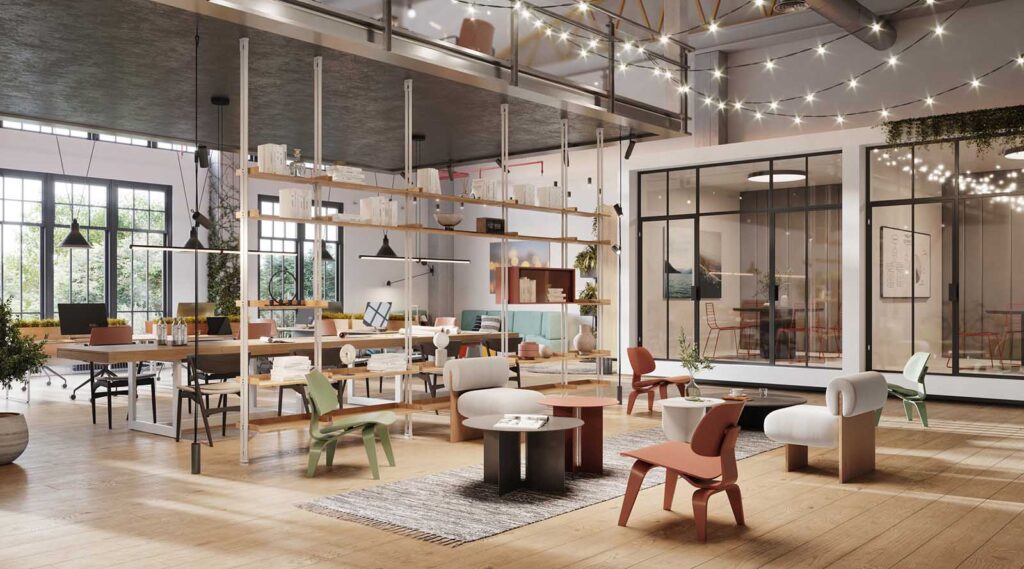Ted Moudis Associates Design Principal Jacqueline Barr explains how the firm’s unique design process has spawned some of the world’s most innovative office spaces.
It seems like every organization these days has some kind of workplace wishlist that always includes the latest tech and an open office concept at the forefront. They think they want these things without actually knowing why and follow trends instead of really understanding the needs of their people.
Asking the right questions and developing a design strategy is where Jacqueline Barr, Design Principal at Ted Moudis Associates, does her best work. Having designed offices for a number of recognizable organizations such as the NFL, Footlocker, and IPG, she spearheads her team into helping clients understand what their space needs at all stages of their operation.
Ted Moudis Associates has been responsible for creating some of the most innovative office spaces in the world. Do you have a personal favorite that you’ve been a part of creating?
Barr: The best jobs for me have been the ones where clients really push us so that we learn. My team and I love the jobs where you have a new opportunity and challenge that allows us to absorb knowledge and learn new strategies because it makes us better designers. If you just do what you always do, you may do it well but you have to take the blinkers off and think wider. Some of the best ideas and thoughts are overlooked due to not being open. You have to push yourself.
The NFL office was a great job. We are still working with them on their new vision, but even at the time it was built, it was a phenomenal journey for us all. It obviously had great branding, but more importantly great storytelling as well. That was one of our biggest dives into experiential design at the time. With some jobs, you can take the name off the back of the reception desk and it can be pretty generic, which is okay if the message is more subtle.
The NFL specifically said if they left their floor or took their name off the walls, they want no one to have any doubt that football is what they’re all about. Every color we chose was dedicated to the teams, the field, the fans, or the game — the “Four Pillars” is what it was tagged. The project traversed multiple floors and the branding itself was truly immersive, from a mock grandstand and private dining box to an astro-turfed locker room. That was a huge favorite from an experiential perspective.
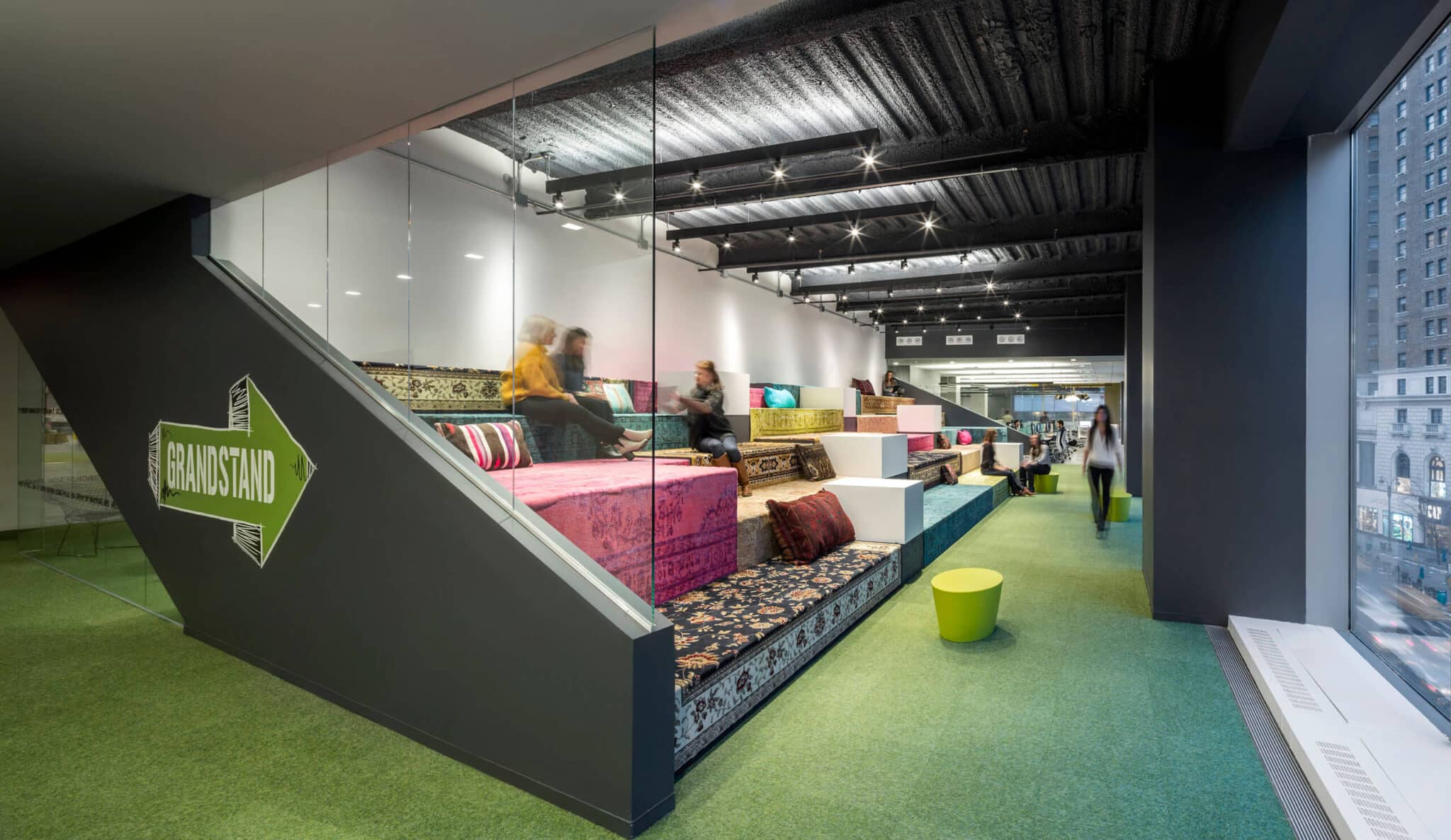
With over 25 years of experience designing office spaces, where do you think priorities have shifted in recent years when it comes to how they’re put together?
Barr: Data driven design is at its peak, but data can only take us so far. On average, about 80 percent of what we’re designing is going to be perfect on day one. There is no 100 percent right solution. You can do your best to anticipate how we’re going to use a space, but some ideas are best left until people have had a chance to settle in and be human. We all work and adapt differently, hence why being flexible and open-minded is so important.
A lot of our solutions have to be a little more intuitive and flexible as a result. Instead of relying solely on data, our approach is also human-centric. Educating our clients on trends and best practices is important, but the key is to filter out what’s right for them as an organization.
For example, what Google did right years ago was embrace variety, choice, ownership of space, flexibility, and trust. They were one of the frontrunners in this progressive approach. It also happened to have a very fun and cool aesthetic. While that aesthetic is not for every company, the principles behind their varied workplace approach can be adopted by all. Our job is to make new spaces that are state-of-the-art, flexible, appropriate, and progressive in as many ways as possible, but wrap it in a skin that speaks to the organization as both a business and culture.
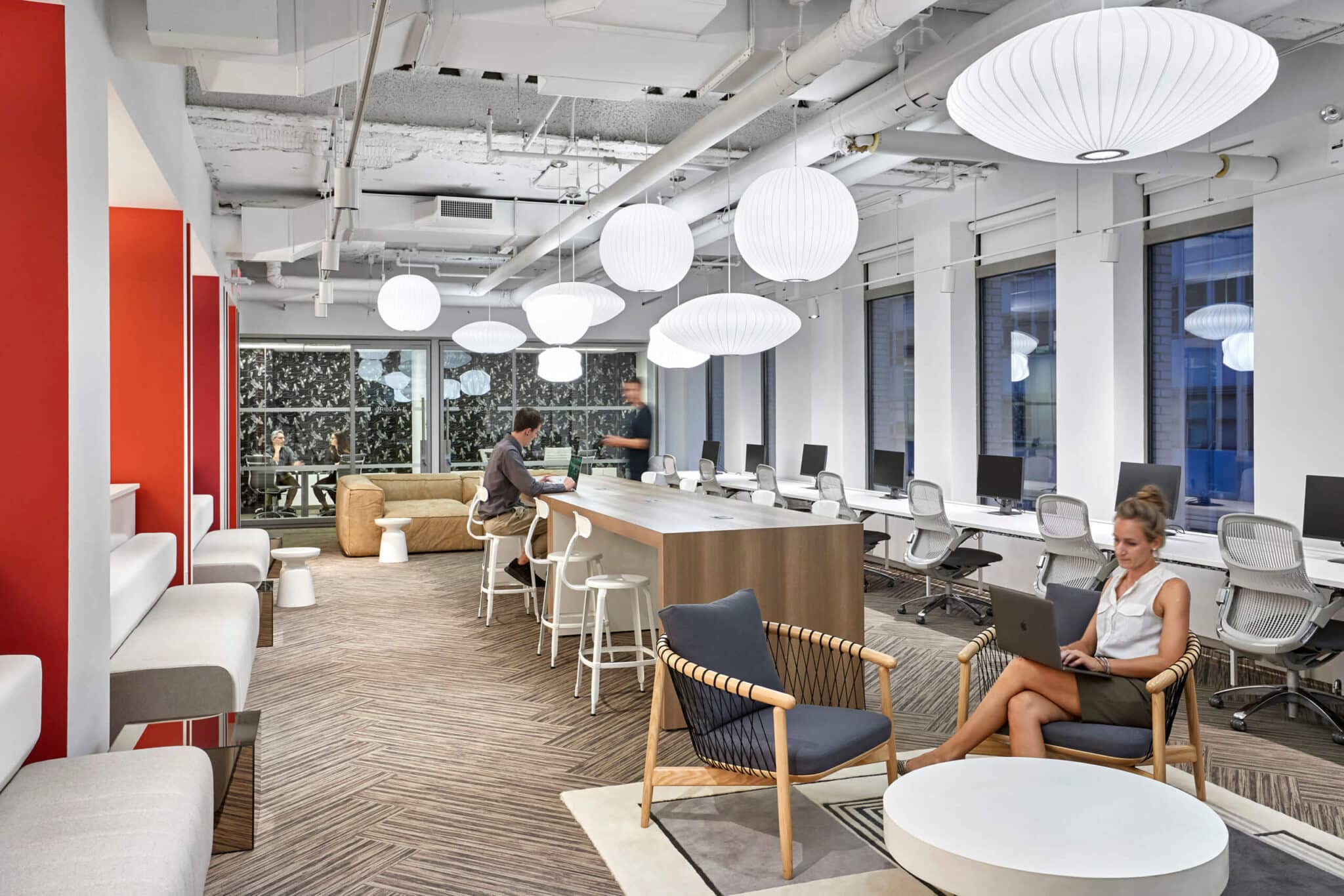
What is the process of creating a unique office space for a specific client? What kinds of questions do you ask in order to ensure it stays true to their brand?
Barr: We have different discovery and visioning sessions with clients to peel back what the space needs to look like. It also depends on the client and whether they have a big internal communications and branding team. It’s important to understand what their message is all about.
In order to help us understand what the space may look like, we talk to clients and ask them to give us words that feel tied to who they are so we can tie it back into the architecture. Let’s say it was being published in the Times for example, and you had just one picture that you wanted staff and clients to look at. What would you want them to say about the space?
Not all of our clients are visual, they can tell you what they like and what they don’t like, but not necessarily know what’s right for them. We start at the base of the pyramid and it’s a long journey. Like any relationship, you start by knowing a little bit, but that partnership is all about asking the right questions and part of that is even sometimes making each other feel uncomfortable. Two steps forward, one step back sometimes.
Ultimately, as you go up the pyramid, whatever that space is going to look like and function like — it’s a joint effort. We’ve done jobs where the client says “I don’t care, just make it look amazing and I’ll work out the rest.” Then you’ve got a client who says “I want it to look amazing, but I want it to be built on the reality of who we are and the history that got us here.”
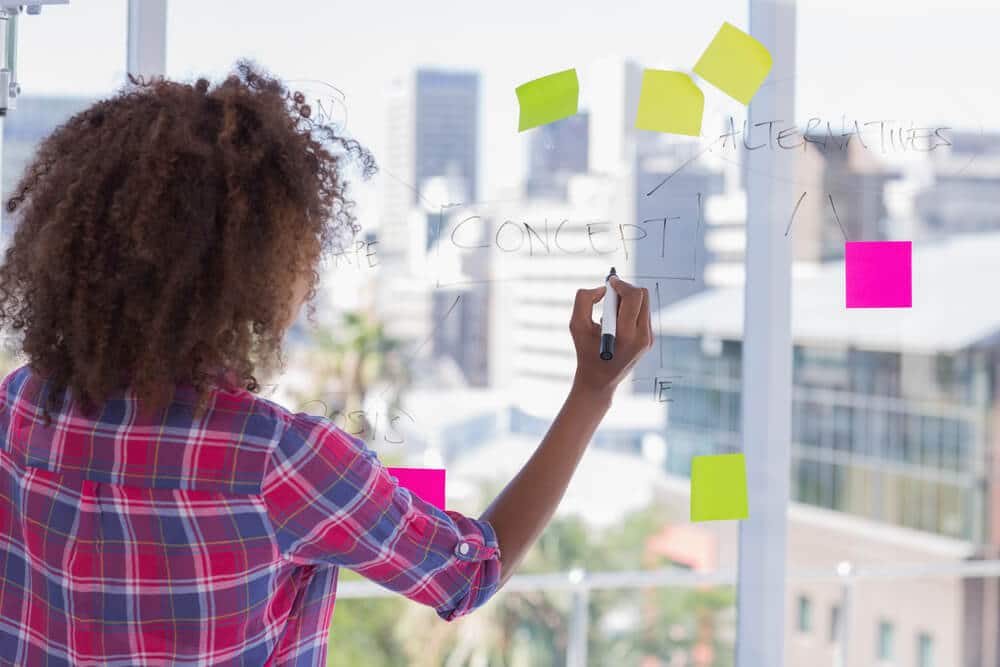
As someone who leads a team of over 30 designers in New York and Chicago, how do you work to ensure everyone is doing their job to the best of their abilities?
Barr: Sometimes clients will ask me: “what sets you apart as a team?” There are great firms out there, but you have to think about what it’s going to take to keep your staff inspired and challenged. I don’t think there is one magic formula, but I do believe you have to be informed, creative, and great listeners. You have to perform your best in whatever situation you’re presented with. Being informed is crucial, our clients are coming to us to help them work out strategies and make decisions because we are the experts, so we’re constantly researching and looking to new influencers. Internal learning and growth is a huge piece of what we focus on in the office.
I also couldn’t do what I do unless I was able to have fun with my team. Yes it’s a business, but you need to have the ability to bring humor and personality as well. It’s a combination of all these things.
Some people are born as phenomenal designers with immense amounts of passion but struggle when they have to pitch. My job is to help build that confidence within the team because the best designers are the ones who are able to do both. If a client doesn’t believe in you or doesn’t think that you believe in what you’re selling to them — they won’t buy it. A lot of my role revolves around streamlining ideas for the team.
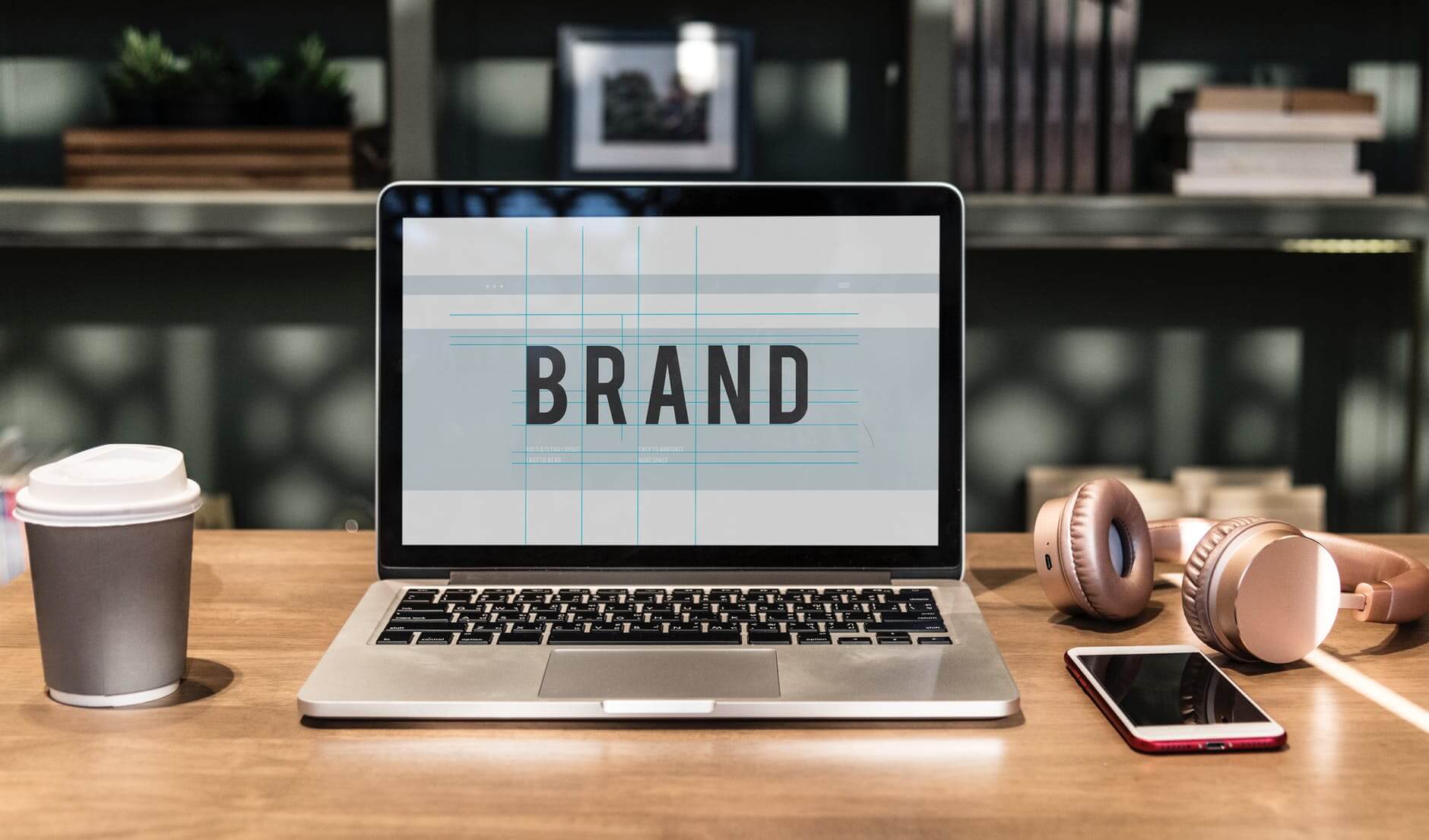
The office experience certainly differs internationally as well. You’ve worked with clients across different continents including North America, Asia, and Europe. How does your design approach change in these different markets?
Barr: It’s interesting in some cases because we’ve worked with some of the same clients in North America, but a lot of those companies can’t just have a cookie-cutter look internationally.
If you’re in Asia, for example, it can still be the name of the client but the office space will be a twist to respect the local culture and employees who live and work differently there. You can’t expect them to work in the same way as a U.S. worker. We’ve just finished some jobs in Ireland and it’s the same client and product, but we needed to design a space for those localized users and their lifestyle.
If you design the same thing for everyone, you’re going to create something that someone isn’t comfortable in. As soon as people get uncomfortable, productivity dips and we haven’t done our job. Our job is to make sure we create a space that pushes productivity higher and finding that little localized twist on the same firm in a different country is part of that.
Find out more about how Ted Moudis Associates can help your organization with workplace design, planning, and strategy at their website.
How do you think a human-centric approach to office design can change the way your workplace functions? Join the conversation and leave us a comment below.
Photos: Courtesy of Ted Moudis Associates, Shutterstock, rawpixel

